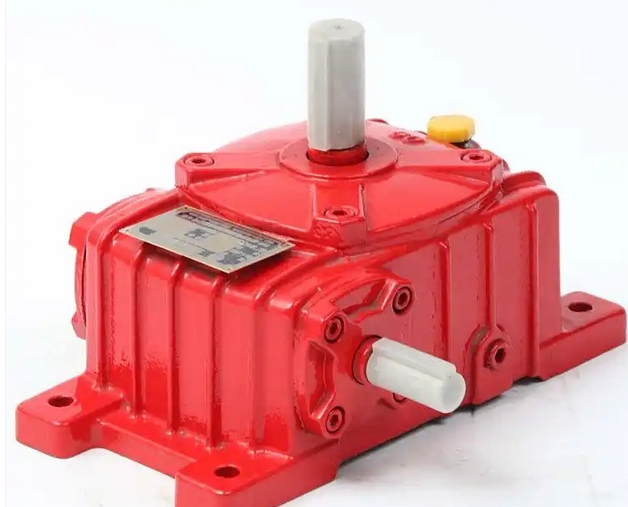What are the factors that affect the noise level of WPO100-60-B worm gear reducer
The main factors affecting the noise level of WPO100-60-B worm gear reducer are as follows:
Gear related factors
Gear wear and damage: Long term operation can cause gear wear, tooth surface damage, resulting in unstable meshing between gears, increased vibration, and the generation of loud noise.

Gear accuracy: Gear accuracy is an important indicator of noise level. The higher the precision, the denser the contact marks on the meshing tooth surface, and the lower the noise; On the contrary, low gear accuracy, small contact marks on the meshing tooth surface, unstable operation, and easy impact can increase noise.
Gear machining error: Accumulated errors in tooth pitch can cause uneven tooth thickness, tooth profile errors can cause tooth surface to have edges, tooth profile asymmetry, etc., all of which can lead to unstable gear driving, pulsation, root cutting, and tooth punching phenomena, resulting in noise.
Bearing issues: Bearing damage or excessive wear is a common cause of noise in gearboxes. The decrease in bearing accuracy will affect the normal meshing of gears, resulting in increased noise.
Lubrication conditions: Insufficient or poor quality lubricating oil can lead to increased direct friction between gears, resulting in noise. Lubricating oil of appropriate viscosity and quality can form a good oil film on the surface of gears, reducing friction and noise.
Assembly and installation
Assembly concentricity and dynamic balance: Assembly with different concentricity can lead to unbalanced operation of the shaft system, and half of the gear mesh is loose while the other half is tight, which collectively exacerbates noise. The imbalance during the assembly of high-precision gear transmission can seriously affect the accuracy of the transmission system and increase noise.
Installation stability: The installation position of the reducer is unstable, the foundation is loose, and noise may be generated due to shaking during operation.
Load and speed
External load instability: The load borne by the gearbox is unstable or too large, which can cause uneven stress on internal components and generate noise.
Operating speed: As the input speed of the gearbox increases, the noise will also increase.
Material and Structure
Gear material: Gears made of different materials exhibit varying levels of noise. For example, cast iron gears are made of materials with high vibration damping rates, which can effectively reduce noise more than steel gears.
Box structure: The box structure has an impact on noise, and using a cylindrical box is beneficial for shock absorption. Under the same conditions, the average noise level of a cylindrical box is 5dB lower than other types of boxes.
Worm related factors
Worm gear accuracy: The accuracy of the worm gear has a significant impact on noise, such as high-frequency periodic noise generated by the tooth pitch deviation of the worm gear, which leads to an increase in noise levels.
Worm linear velocity and speed: The higher the linear velocity and speed of the worm, the greater the noise usually.
Worm gear material and surface roughness: The stiffness and friction coefficient of the material can affect noise, for example, plastic worm gears have lower noise than metal worm gears; The lower the surface roughness of the worm, the lower the noise may be.

